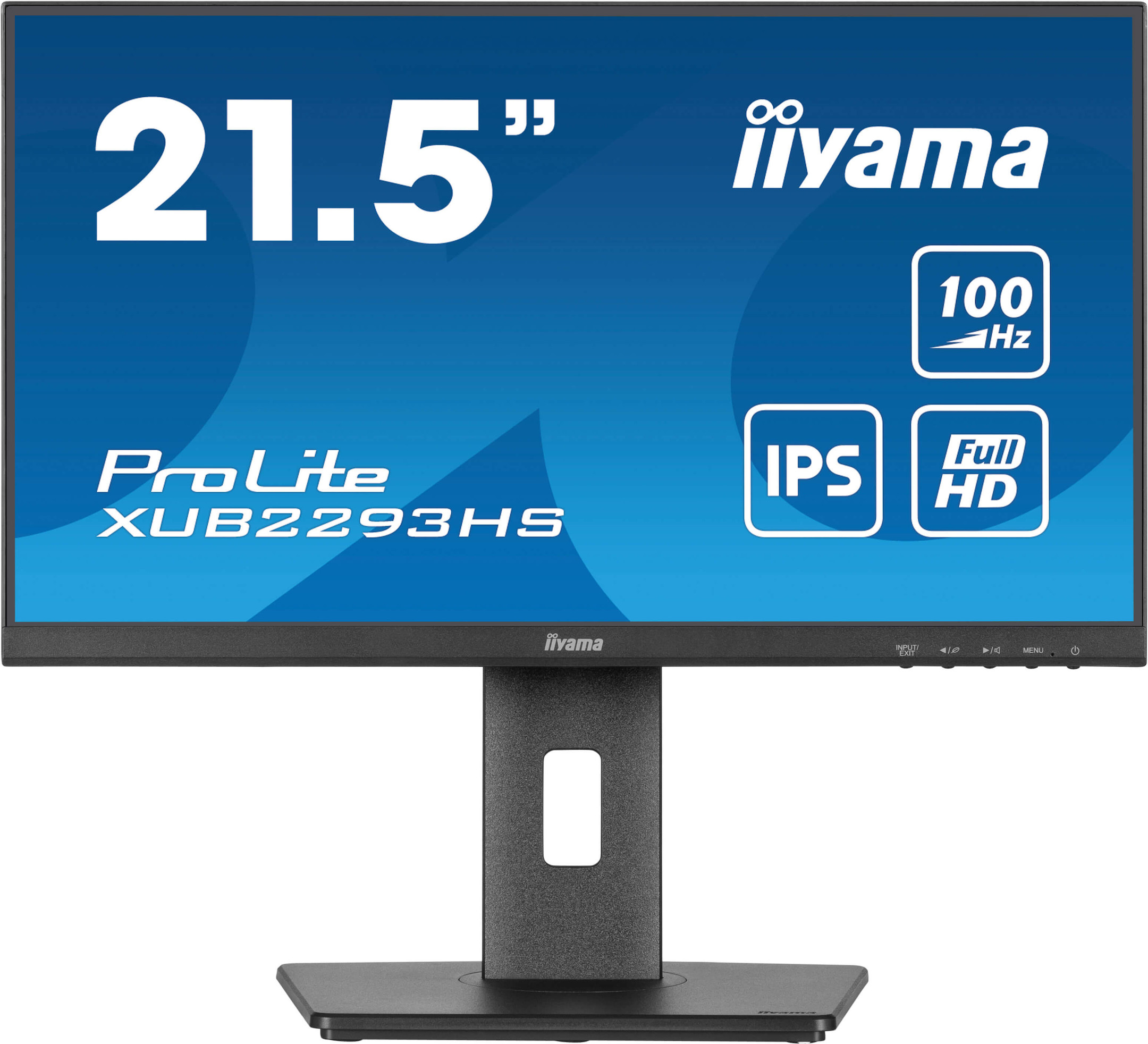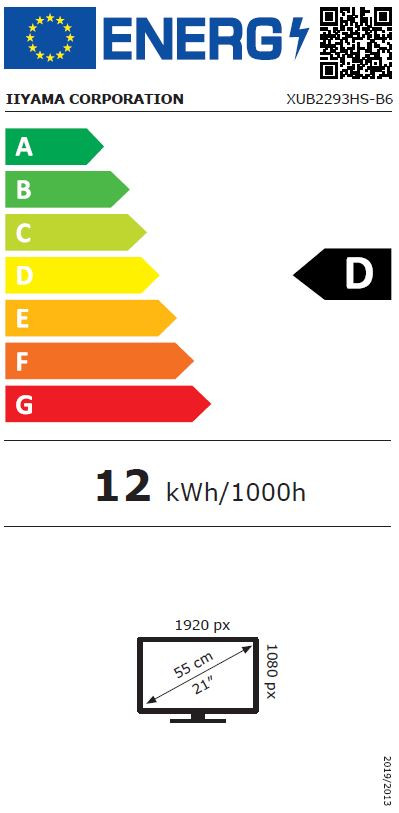















































£111.09*
- Resolution 1920 x 1080 Full HD
- Diagonal 22"
- Panel type IPS
- Refresh Rate 100Hz



Product information
The elegant edge-to-edge design makes the ProLite XUB2293HS the perfect solution for multi-monitor applications. The IPS panel technology ensures excellent and consistent colour reproduction across a wide viewing angle. The high contrast and brightness values offer outstanding performance in the areas of photography and web design. Equipped with speakers, a headphone jack, HDMI and DisplayPort connections, a blue light reduction function to reduce eye fatigue and an ergonomic, height-adjustable 150 mm stand for optimum user comfort, this monitor is an excellent choice for office applications.
IPS TECHNOLOGY
IPS displays are best known for their wide viewing angles and natural, highly accurate colours. They are particularly suitable for colour-critical applications.
FLICKER-FREE + BLUE LIGHT TECHNOLOGY
Flicker-free monitors with blue light reducer function significantly reduce eye strain and fatigue due to their refresh rate and the blue light emitted compared to conventional monitors.
ACR
ACR (Advanced Contrast Ratio) is a function that automatically changes contrast and brightness.
SPEAKERS AND HEADPHONES
Want to play with friends? Just use the integrated, high-quality stereo speakers. Don't want to disturb anyone? Then plug in your headphones and turn up the volume.
VESA
A standard that allows you to easily attach a wall or table mount.
Technical data
| Name | iiyama XUB2293HS-B6 22" IPS Monitor, 1920 x 1080 Full HD, 110Hz, 1ms |
|---|---|
| Article number | 1000032329 |
| GTIN/EAN | 4948570124237 |
| Manufacturer SKU | XUB2293HS-B6 |
| EPREL ID | 2013357 |
| Model name | XUB2293HS-B6 |
| Brand | iiyama |
| Product Type | Monitor |
| Product Series | iiyama Prolite X Series |
| Technology | LED |
| Panel type | IPS |
| backlight | LED |
| Resolution | 1920 x 1080 Full HD |
| Diagonal | 22" |
| Aspect Ratio | 16:9 |
| Viewing angle - Horizontal | 178° |
| Viewing angle - Vertical | 178° |
| Contrast Ratio | 1,000 :1 |
| Screen finish | Matt |
| Max. Brightness | 300 cd/m² |
| Response time | 1ms |
| Refresh Rate | 100Hz |
| Support - VESA | 100 x 100 |
| Inputs | 1x Displayport , 1x HDMI |
| Outputs | 1x 3,5mm Jack |
| heightadjustable foot | 150 mm |
| Features | Flicker Free , Integrated speaker , height adjustable |
| Product width | 49.2 cm |
| Product height | 32.8 cm |
| Product depth | 20.95 cm |
| Weight | 3.9 kg |
| Colour | Black |
| EEK Spectrum | A to G |
| Energy efficency class | D |
| Delivery contents | HDMI Cable , Power cable |
| Condition | New |
| Warranty | 24 Month |
| Warranty type | Bringin service Service and support information |
Product safety
| Person responsible for the EU |
|---|
| iiyama International Corporate |
| Wijkermeerstraat 8 |
| 2131 HA Hoofddorp |
| Netherlands |
| info.de@iiyama.com |



